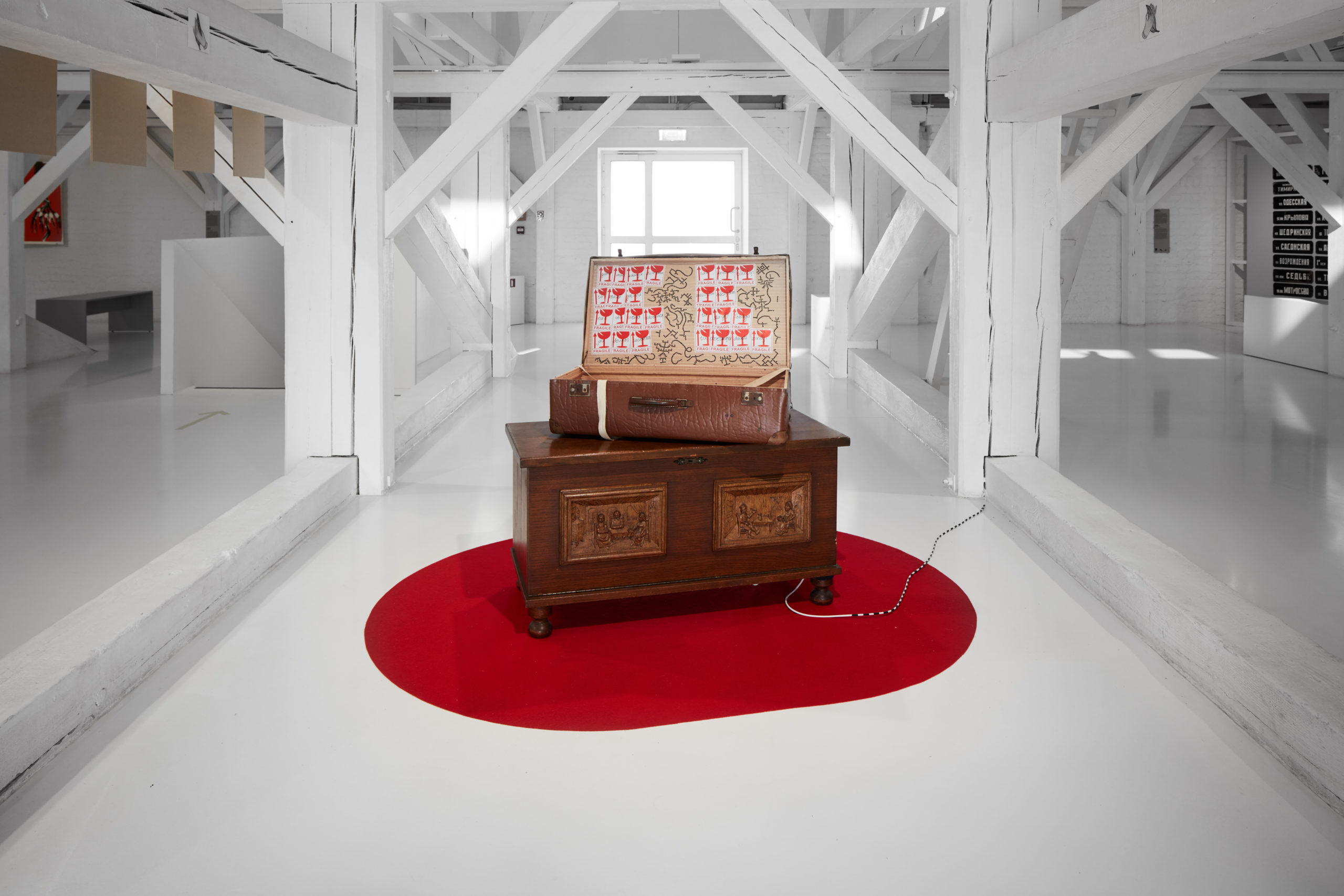Quinsy Gario
How to Lift The Arms of De Hoop
2020
Installation
Audio guide to this piece
Quinsy Gario’s sticker installation is a contemplation on the fates and fortunes carried by two ships commissioned by Duke Jacob Kettler in the 17th century. In 1645, the De Hoop was carrying ivory and pepper from Liberia and tropical timber from St. Maarten back to Amsterdam and The Duchy of Courland. In 1654, the other ship, The Arms of the Duchess of Courland, was carrying Courounians, consisting of Baltic Germans and presumably also ethnic Latvians, to Tobago. As these ships sailed, they changed lives and environments forever and carried packages, although different in size, that caused seismic shifts in our realities. The work takes up the challenge thrust upon us to remember stories where there are no original source materials to be found. By utilising and altering dainas, a radical solution is offered. Dainas were pivotal in keeping the Latvian national identity alive during the various occupations by outside forces. As popular culture in Latvia is now claiming the Courounian occupation of other lands as a moment of pride, the work opens up a space to rethink this. Gario has altered the dainas to include references to this colonial past and the ways the foundations laid then still live on now. This has been done by refusing to “master” the language, and thus unexpected syntax and grammar disrupt the flow of the stories that have been told about the national self, presenting opportunities for expansion.
This installation continues research conducted by Quinsy Gario on Courounian colonialism in Latvia and the Netherlands. This is the third work to come from that research. The previous works have been shown during the LCCA Summer School in Kuldīga, at the Stedelijk Museum in Amsterdam, on e-flux and at Het Nieuwe Instituut in Rotterdam.
Quinsy Gario
Quinsy Gario (Curaçao/St. Maarten/the Netherlands), is a graduate of the Master Artistic Research from the Royal Academy of Art The Hague and has a background in media studies, gender studies and postcolonial studies from Utrecht University. His work focuses on decolonial remembering and disruption. His most well-known work is Zwarte Piet Is Racisme, which focused on a national practice of blackface in the Netherlands. Gario has shown work in among other places The Stedelijk Museum (Amsterdam), MACBA (Barcelona), Het Nieuwe Instituut (Rotterdam), Van Abbemuseum (Eindhoven) and Gorki Theater (Berlin). He has been awarded numerous prizes and has written two poetry collections and collection of non-fiction writing. He is a member of the pan-African artist collective State of L3.



